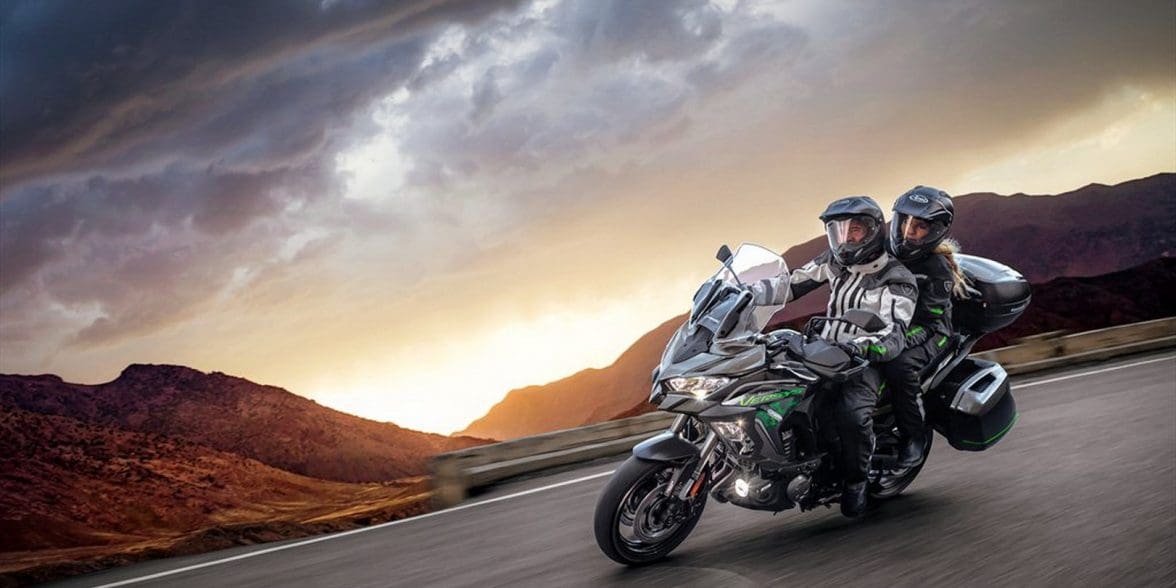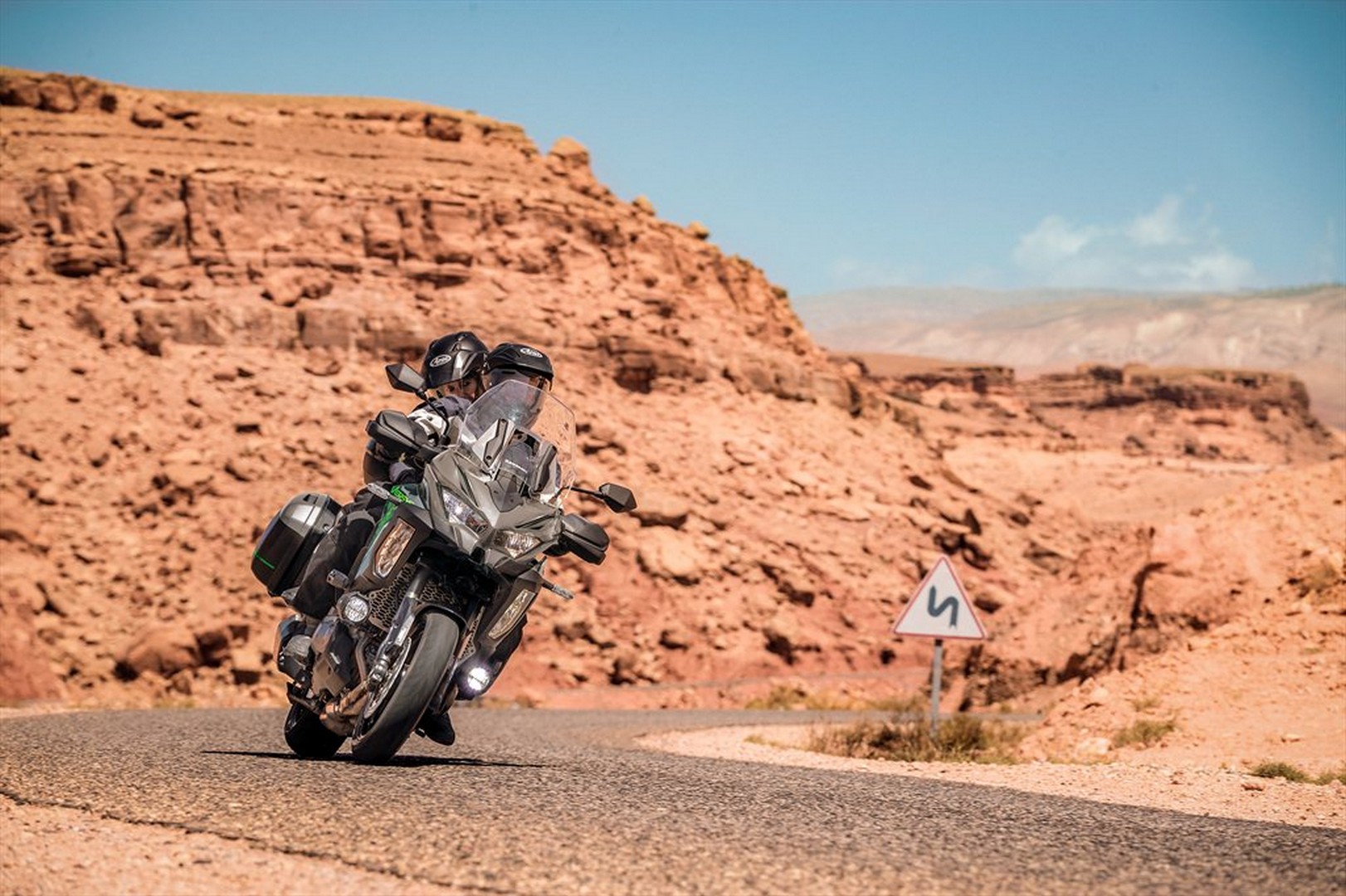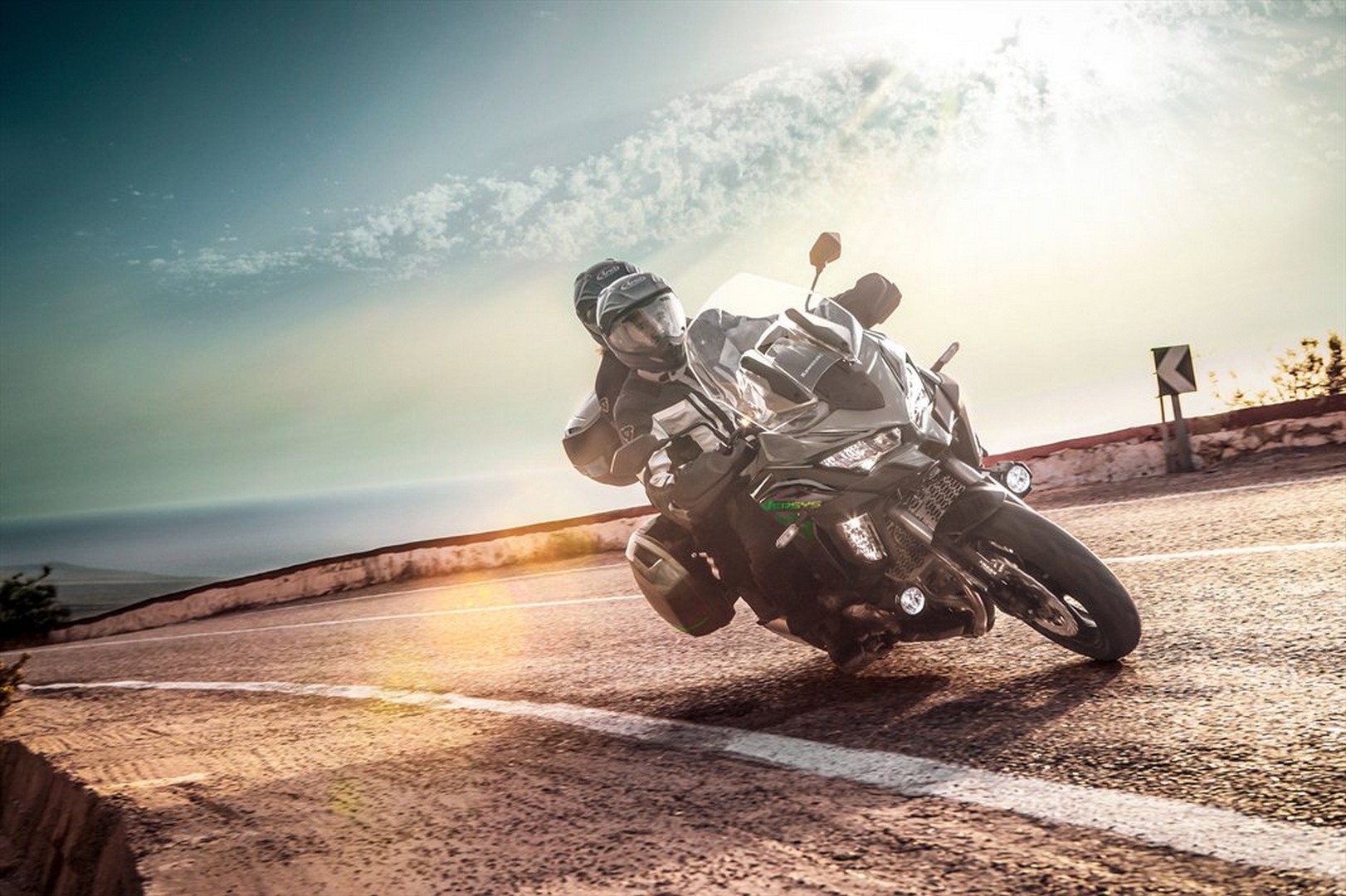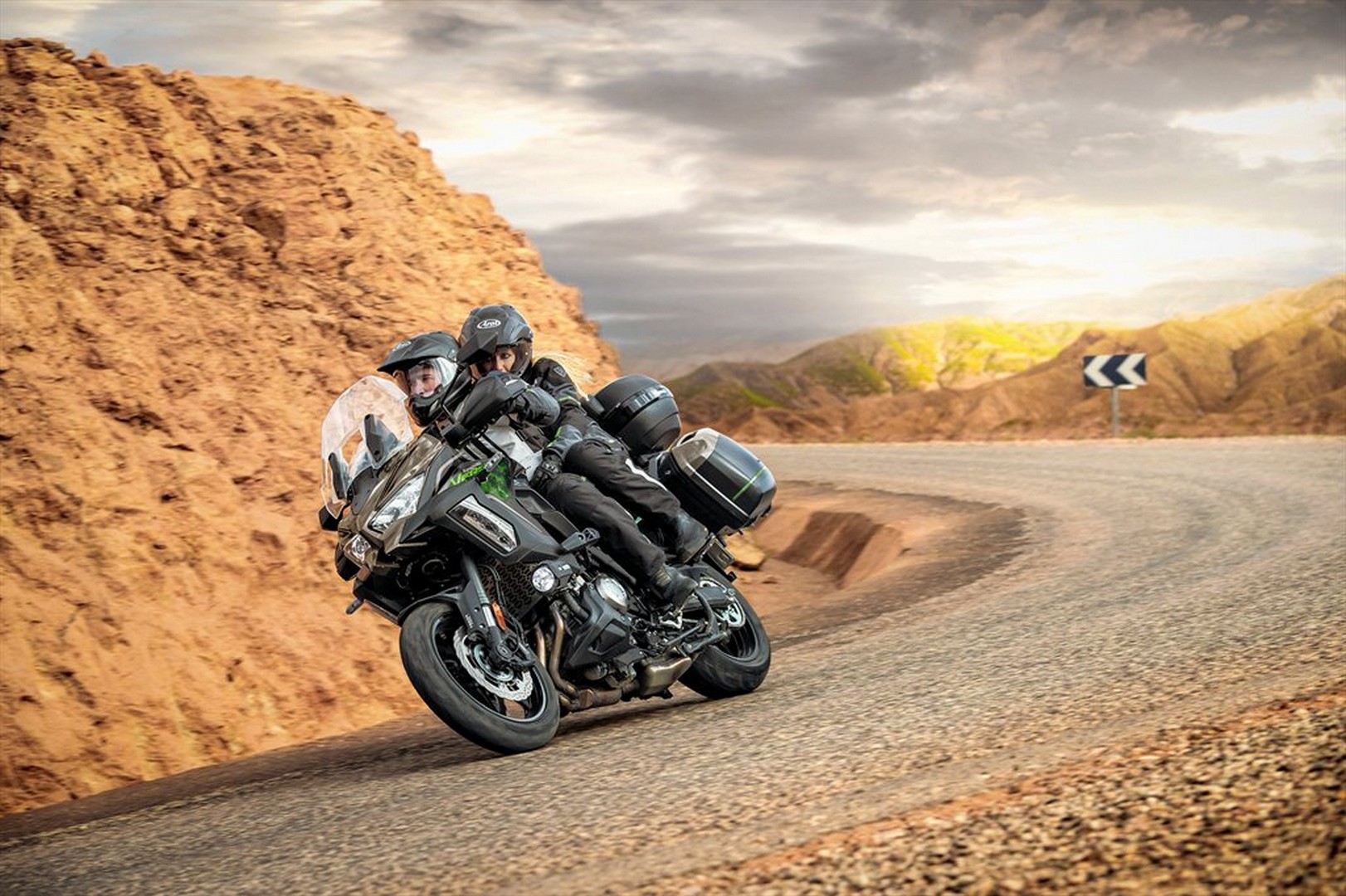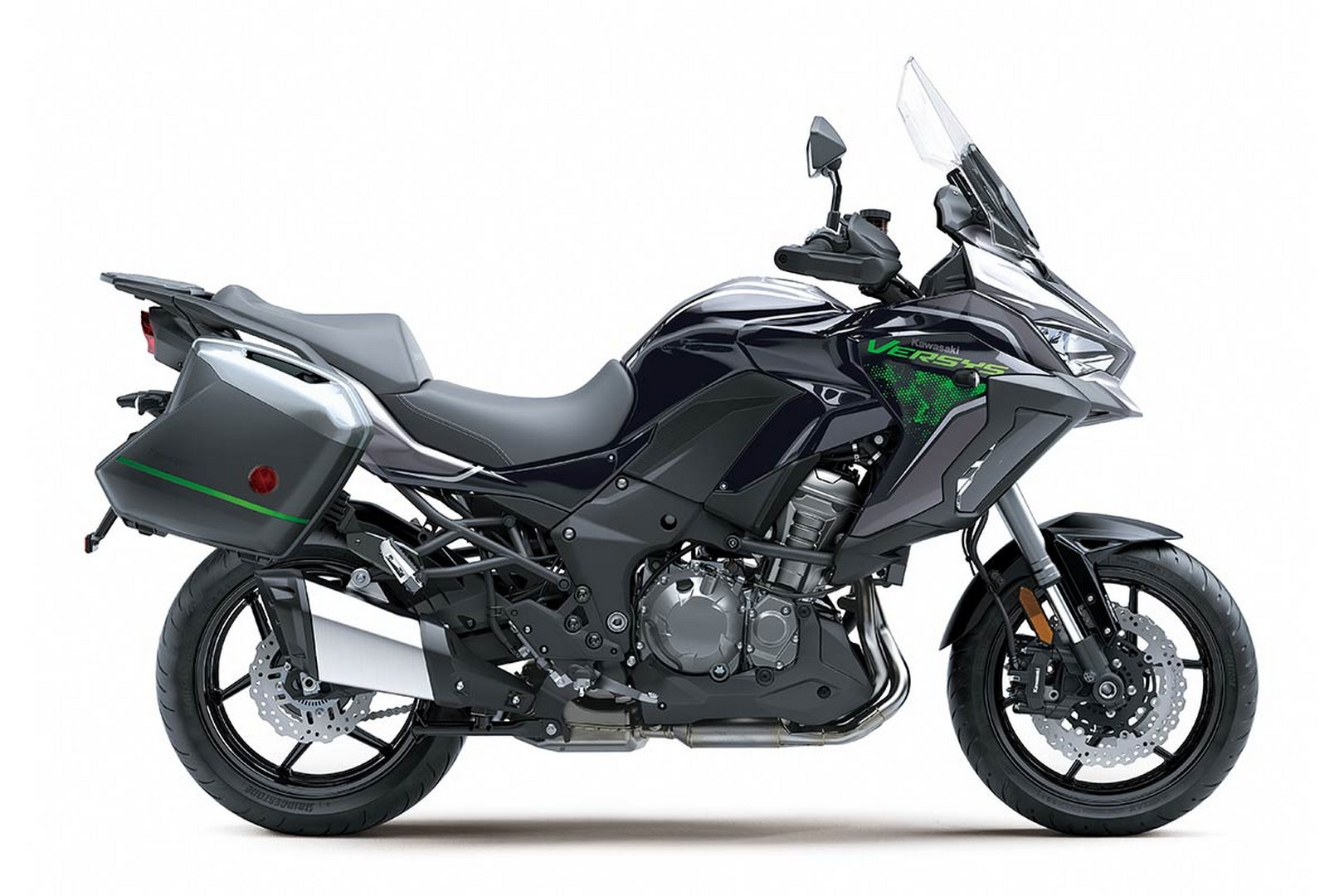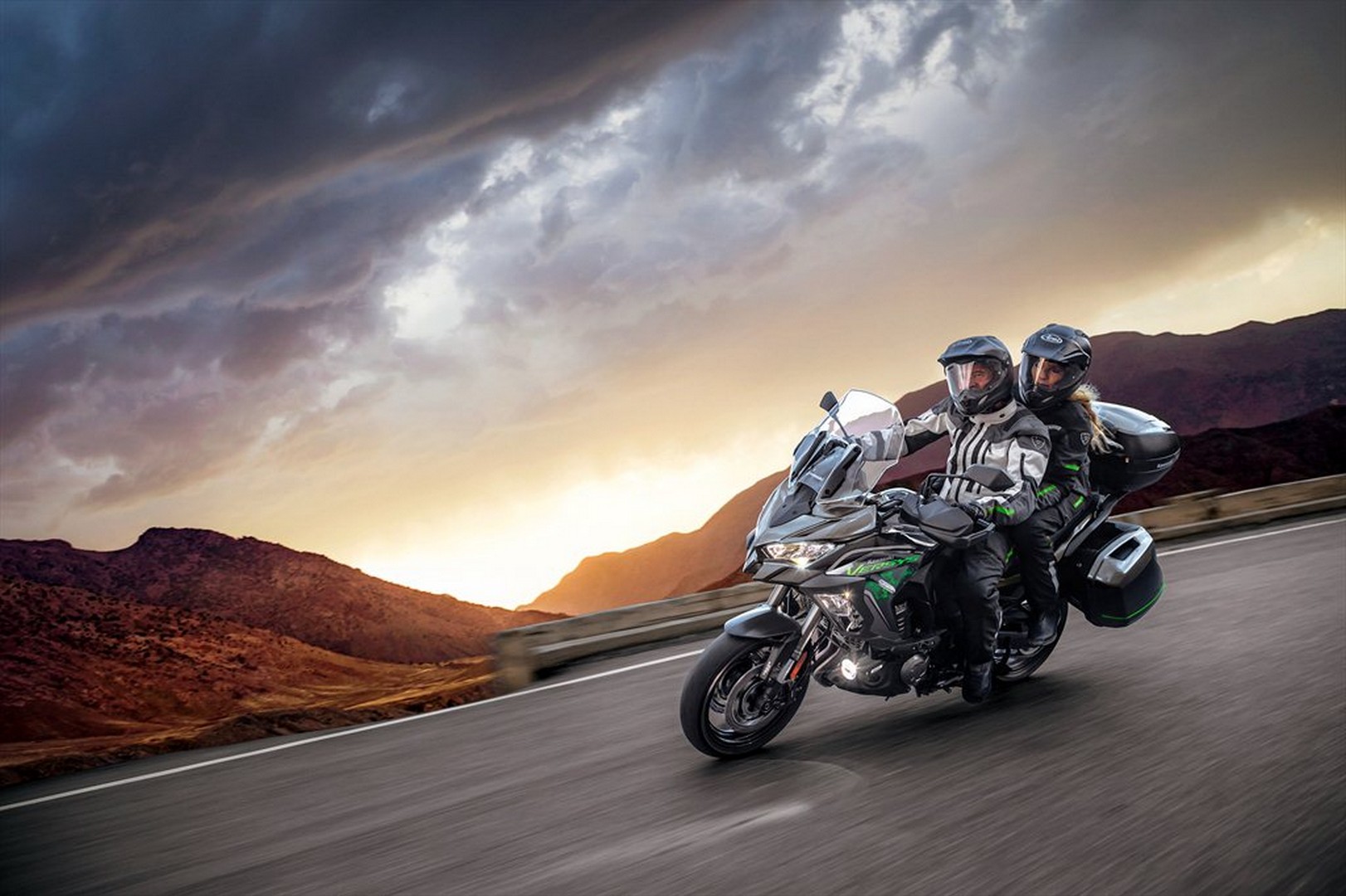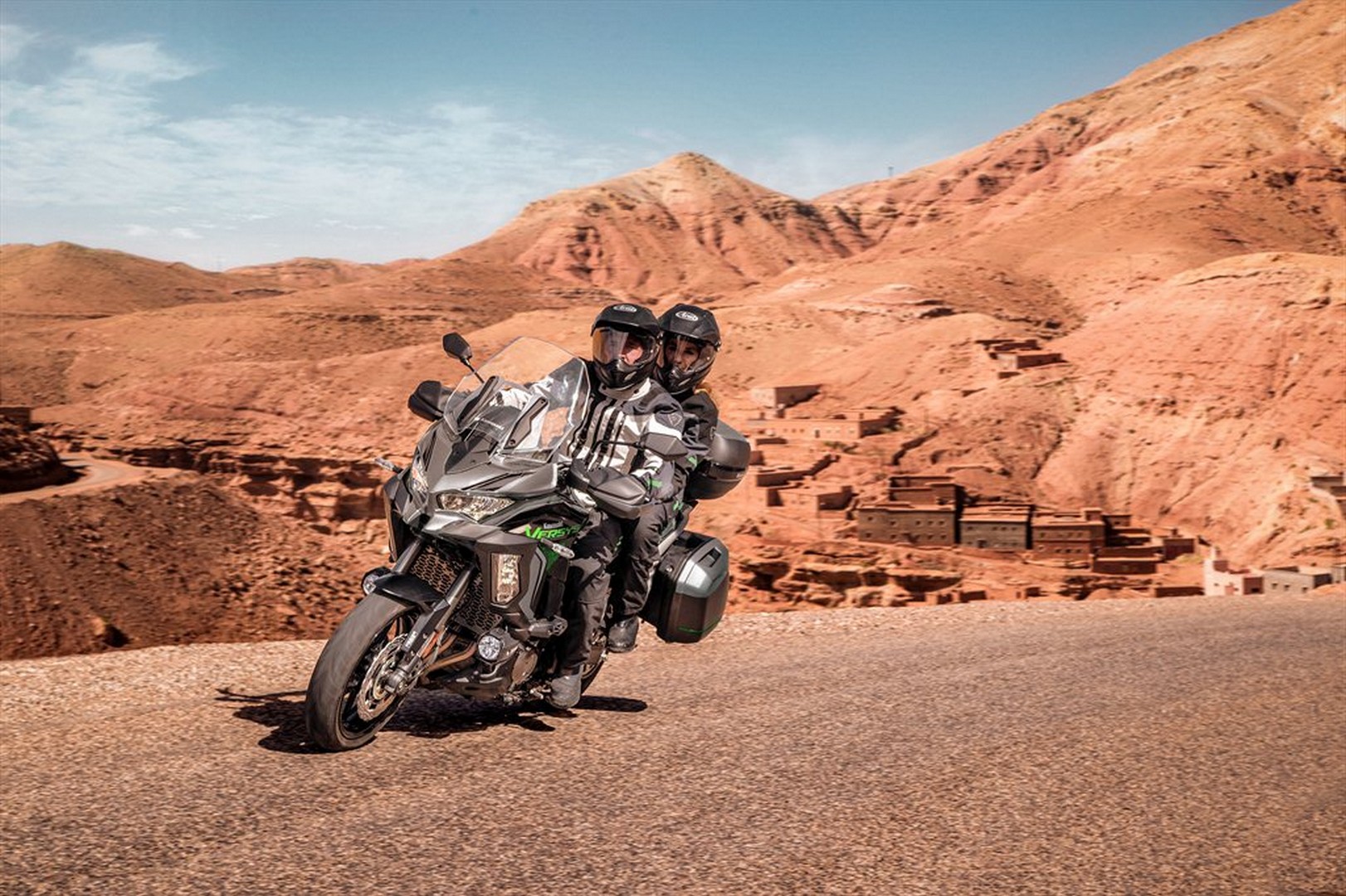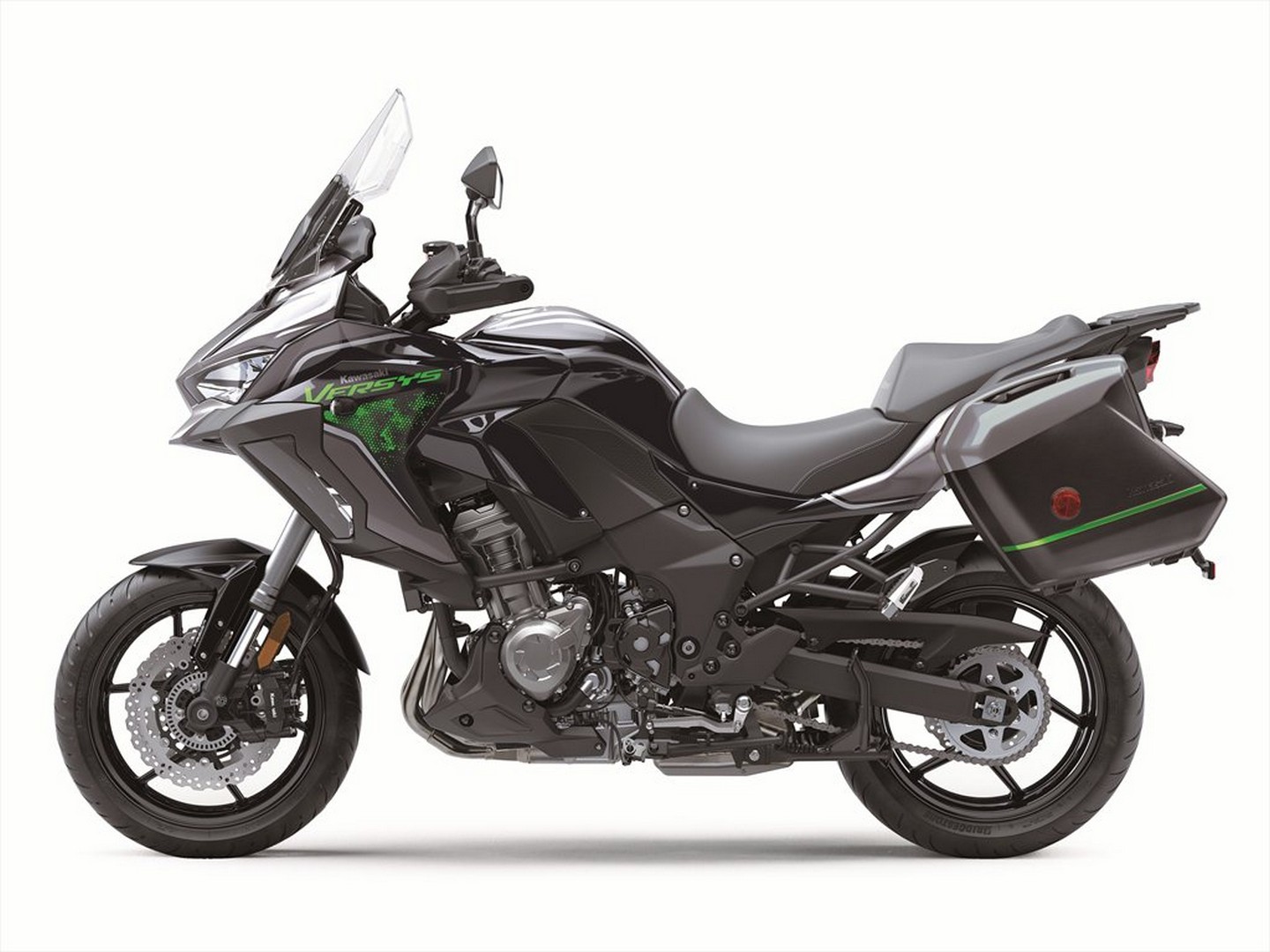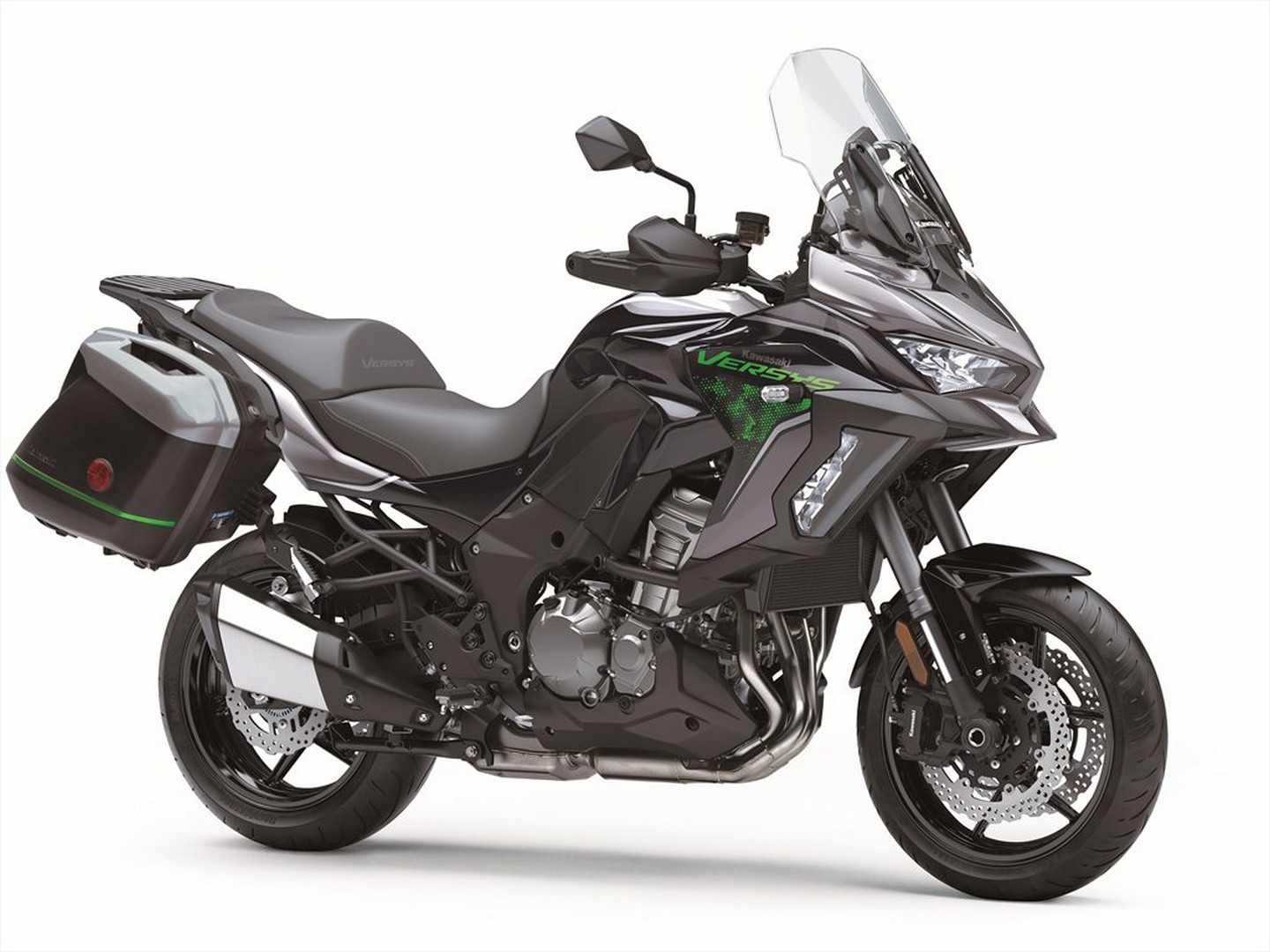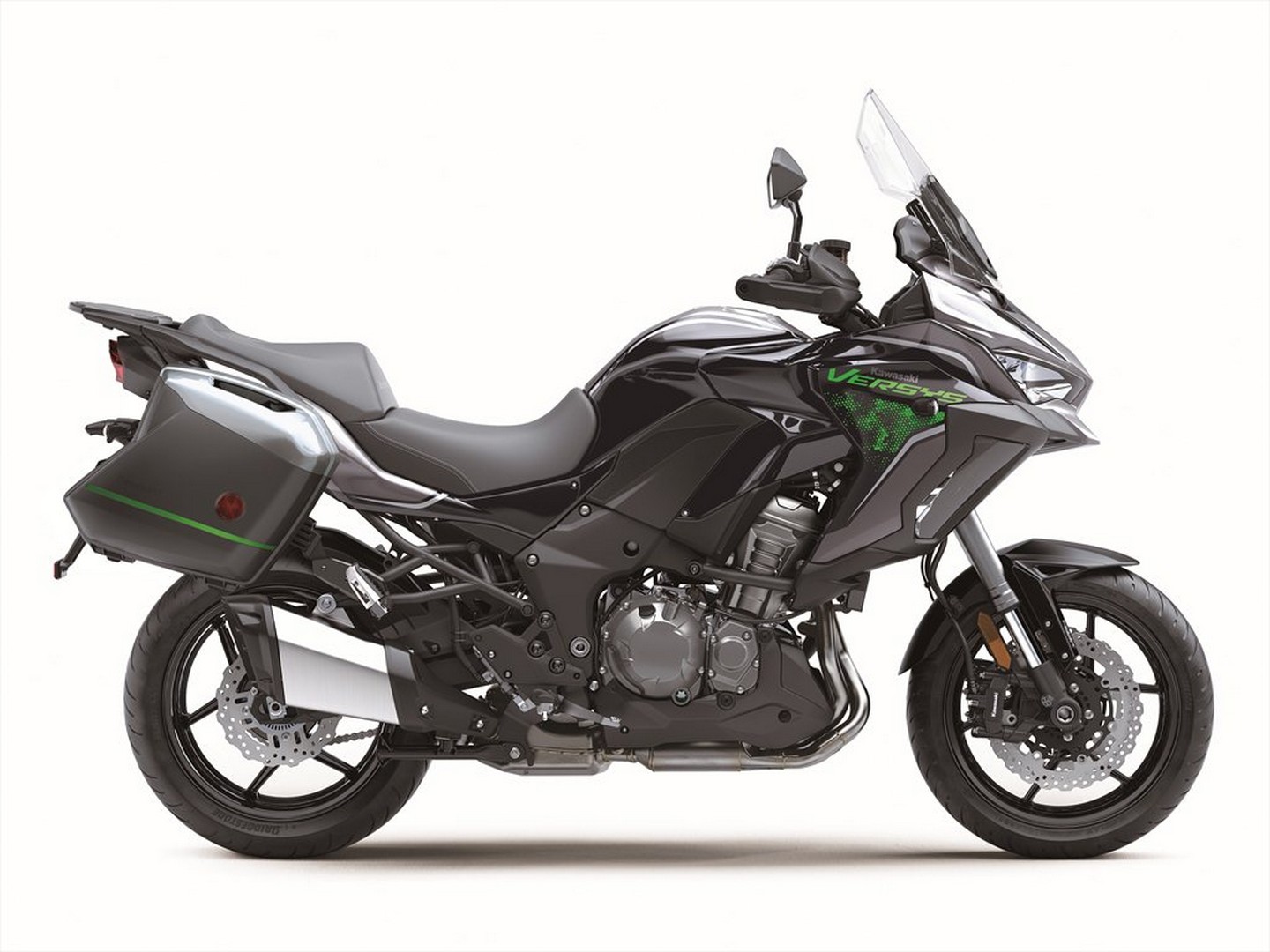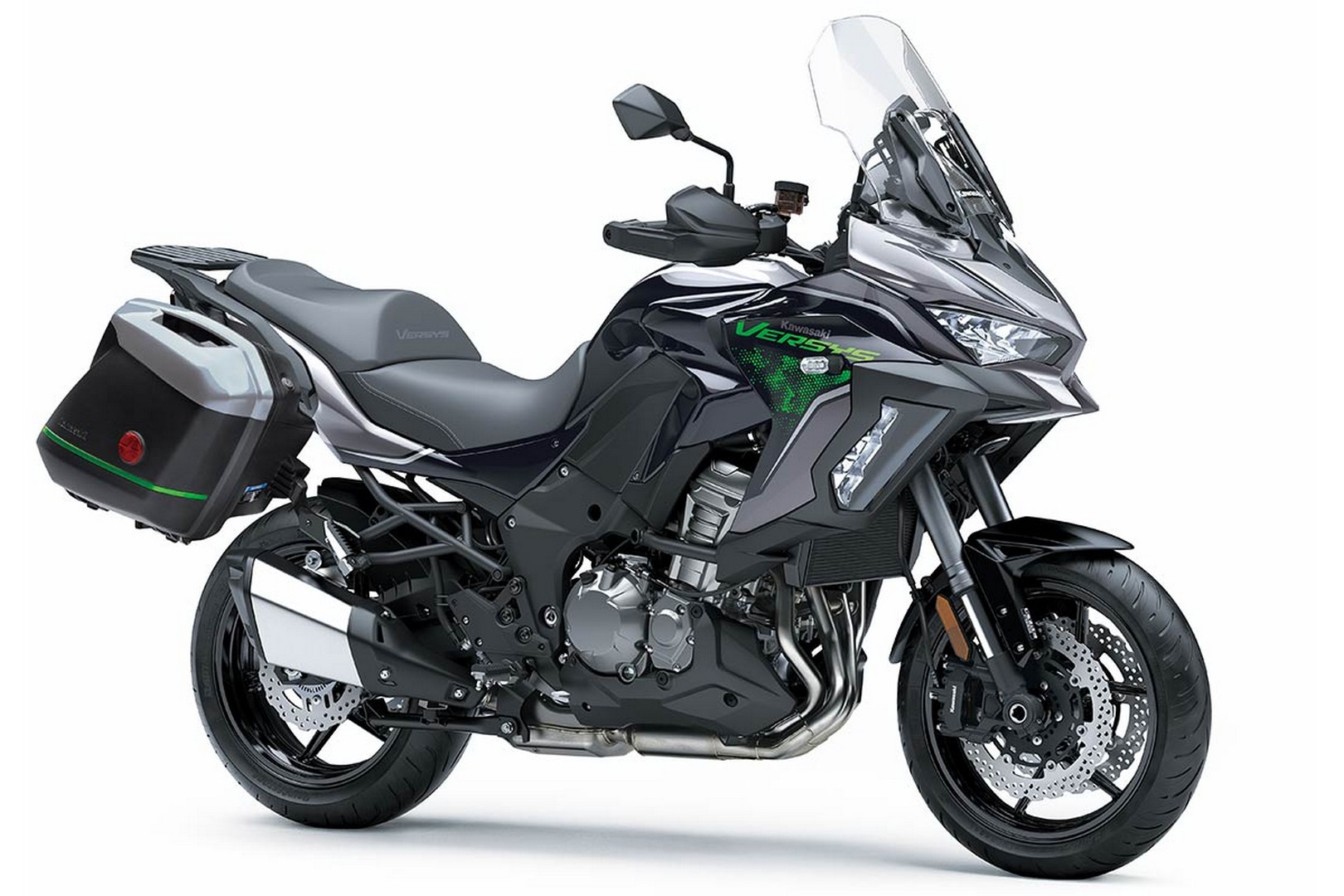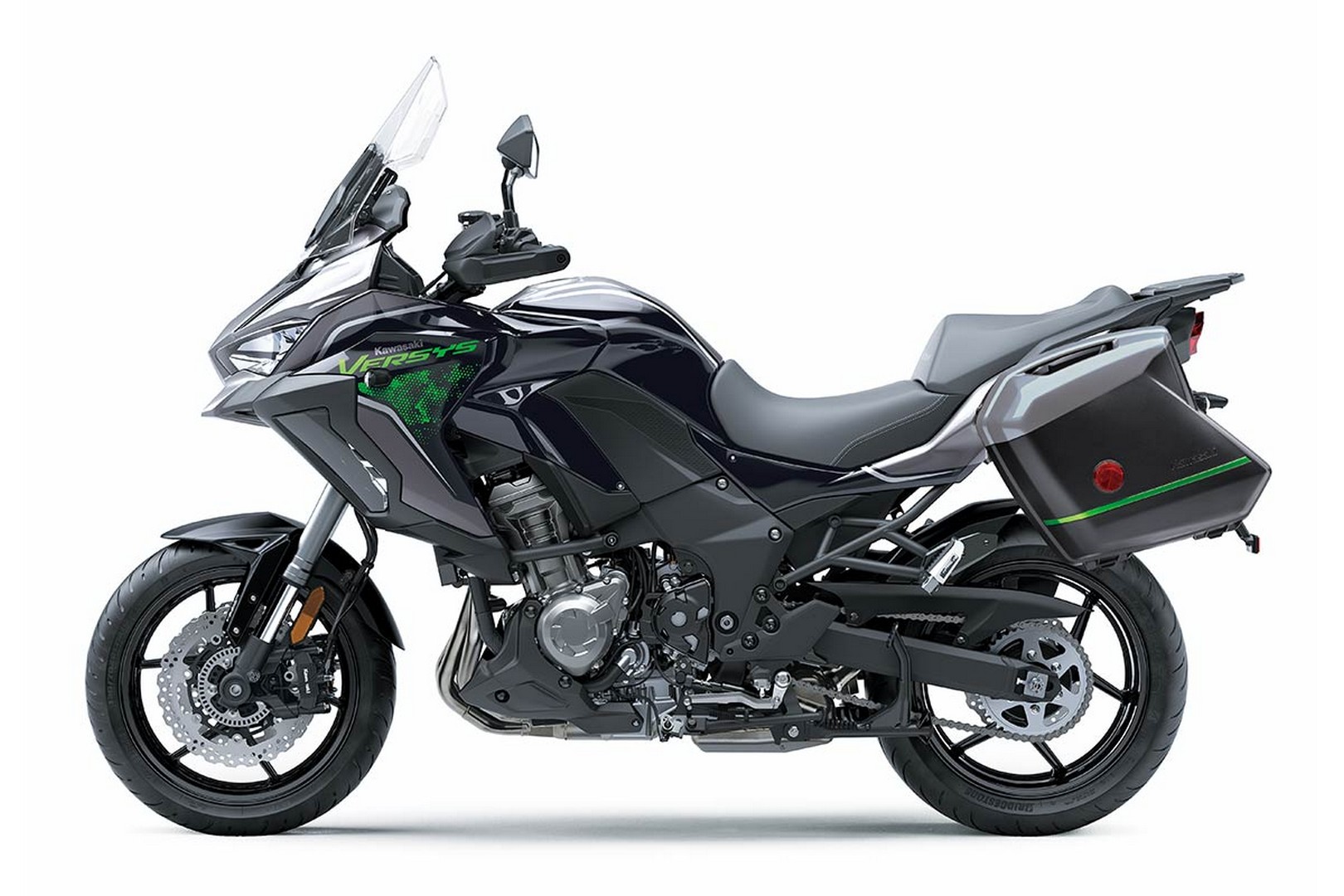The 2023 Kawasaki Versys 1000 SE LT+ – Performance Meets Comfort On The Open Road
Contents
For 2023 Kawasaki has created a versatile adventure-touring motorcycle in the form of the Versys 1000 SE LT+ that offers a compelling blend of performance, comfort, and value. The 1000 is at the top of Kawasaki’s Adventure lineup in terms of engine size. At the heart of the Versys 1000 LT lies a powerful and smooth 1,043cc inline-four engine. Designed to tackle a wide range of riding environments, the Versys 1000 SE LT+ has received a number of updates, ensuring that it remains a top choice among Japanese motorcycle offerings for riders seeking a well-rounded and reliable machine. Delivering a broad range of power across the rev range, this engine offers strong low-to-mid range torque, ensuring riders have plenty of accessible power for both spirited rides and long-distance touring. In regard to touring, the Versys is well equipped as far as suspension and the adjustable system includes an inverted 43mm fork up front and a horizontal back-link rear shock.
The 2023 Kawasaki Versys 1000 SE LT+ of course comes equipped with an advanced electronics package, including a Bosch Inertial Measurement Unit and a lengthy list of features and acronyms that basically showcase what the Kawasaki brand can pack into a motorcycle. The Versys also features an easy-to-read TFT color instrumentation display, which provides essential information to the rider, including gear position, fuel level, and customizable riding modes.
The Versys is designed with long-distance touring in mind, and as such, it features a comfortable, upright riding position and a well-padded seat. The bike’s adjustable windscreen can be adjusted to the rider’s preference. Additionally, the Versys 1000 SE LT+ comes standard with color-matched, quick-release saddlebags, providing ample storage capacity for weekend getaways or cross-country adventures.
The 2023 Kawasaki Versys 1000 SE LT+ starts at $18,899 USD/$21,199 CAD
On this page: we’ve curated specs, features, news, photos/videos, etc. so you can read up on the new 2023 Kawasaki Versys 1000 SE LT+ in one place.
Model Overview
General Info
- Price: $18,899 USD/$21,199 CAD
- Key Features:
-
- LED lighting
- Advanced Rider Aids (KQS, KTRS, ABS)
- Full-color TFT display
- Electronic Control Suspension
- Adjustable controls and windscreen
Main Specs
- Engine: 1,043 cc 4-stroke, 4-cylinder, DOHC, 16-valve, liquid-cooled
- Power: 118 horsepower
- Torque: 75.2 lb-ft
- Weight: 566.7lbs (256 kgs)
- Seat Height: 33.1 inches (840 mm)
Competitors
2023 Kawasaki Versys 1000 SE LT+ Specifications
ENGINE |
||
| Engine | 1043cc, 4-stroke, 4-cylinder, DOHC, 16-valve, liquid-cooled | |
| Power | 118 HP | |
| Bore x Stroke | 77.0 x 56.0mm | |
| Compression Ratio |
10.3:1
|
|
| Fuel System | DFI® with 38mm Keihin ETV throttle bodies (4) | |
| Starter | Electric | |
| Electronic Rider Aids | Kawasaki Electronic Control Suspension (KECS), Integrated riding modes, Kawasaki Quick Shifter (KQS), Electronic cruise control and heated grips | |
DRIVETRAIN |
||
| Clutch | ||
| Transmission | 6-speed, return shift, Kawasaki Quick Shifter (KQS) | |
| Final Drive | Sealed chain | |
CHASSIS |
||
| Suspension Front | 43mm inverted fork with KECS-controlled rebound and compression damping, manual spring preload adjustability and top-out springs/5.9 in | |
| Suspension Rear | Horizontal back-link New Uni-Trak®, BFRC gas charged shock with piggyback reservoir, KECS-controlled compression and rebound damping electronically-adjustable spring preload/5.9 in | |
| Brakes Front | Dual 310mm petal-style discs with four-piston calipers, KIBS ABS | |
| Brakes Rear |
Single 250mm petal disc with single-piston caliper, KIBS ABS
|
|
| Tires Front | 120/70 ZR-17 | |
| Tires Rear | 180/55 ZR-17 | |
| Fuel Tank Capacity | 5.5 gal | |
| Color |
Metallic Graphite Gray/Metallic Diablo Black/Metallic Flat Spark Black
|
|
ELECTRICAL |
||
| Ignition | TCBI with electronic advance | |
| Spark Plugs | ||
| Headlight | LED | |
| Tail Light | LED | |
DIMENSIONS |
||
| Overall Length | 89.4 in | |
| Overall Width | 37.4 in | |
| Overall Height | 58.7 in/60.2 in (windshield down/up) | |
| Wheelbase | 59.8 in | |
| Ground Clearance | 5.9 in | |
| Seat Height | 33.1 in | |
| Curb Weight | 566.7 lb (+ Saddlebags, Hand Guards, & Hardware approx. 20 lb.) | |
WARRANTY |
||
| Warranty | 24 month limited warranty | |
| Kawasaki Protection Plus | 12, 24, 36 or 48 months | |
2023 Kawasaki Versys 1000 SE LT+ Features
Assist & Slipper Clutch
Under normal operation, the assist cam functions as a self-servo mechanism, pulling the clutch hub and operating plate together to compress the clutch plates. This allows the total clutch spring load to be reduced, resulting in a lighter clutch lever feel when operating the clutch.
When excessive engine braking occurs – as a result of quick downshifts (or an accidental downshift) – the slipper cam comes into play, forcing the clutch hub and operating plate apart. This relieves pressure on the clutch plates to reduce back-torque and helps prevent the rear tire from hopping and skidding. This race-style function is particularly useful when sport or track riding.
Dual Throttle Valves
On models with dual throttle valves, there are two throttle valves per cylinder: in addition to the main valves, which are physically linked to the throttle grip and controlled by the rider, a second set of valves, opened and closed by the ECU, precisely regulates intake airflow to ensure a natural, linear response. With the air passing through the throttle bodies becoming smoother, combustion efficiency is improved and power is increased.
Economical Riding Indicator
While effective vehicle speed and engine speed may vary by model, paying attention to conditions that cause the “ECO” mark to appear can help riders improve their fuel efficiency – a handy way to increase cruising range. Further, keeping fuel consumption low also helps minimize negative impact on the environment.
Electronic Cruise Control
Electronic Throttle Valves
Electronic throttle valves also enable more precise control of electronic engine management systems like S-KTRC and KTRC, and allow the implementation of electronic systems like KLCM, Kawasaki Engine Brake Control, and Electronic Cruise Control.
KCMF (Kawasaki Cornering Management Function)
KTRC (Kawasaki Traction Control)
Less intrusive modes maintain optimum traction during cornering. Designed with sport riding in mind, they facilitate acceleration out of corners by maximizing forward drive from the rear wheel. And because Kawasaki’s sophisticated software bases its dynamic analysis on the chassis’ orientation relative to the track surface (rather than relative to a horizontal plane), it is able to take into account corner camber, gradient, etc., and adapt accordingly.
In the more intrusive modes (and for some models, in any mode), when excessive wheel spin is detected, engine output is reduced to allow grip to be regained, effectively enabling riders to negotiate both short, slippery patches (train tracks or manhole covers) and extended stretches of bad roads (wet pavement, cobblestone, gravel) with confidence.
Power Modes
Smartphone Connectivity
KQS (Kawasaki Quick Shifter)
ABS (Anti-lock Brake System)
2023 Kawasaki Versys 1000 SE LT+ Photos
2023 Kawasaki Versys 1000 SE LT+ Videos
2023 Kawasaki Versys 1000 SE LT+ review by Bud Robinson Motorsports:
2023 Kawasaki Versys 1000 SE LT+ Review by V-Told’s Moto Show:
Links
Kawasaki Official Websites


